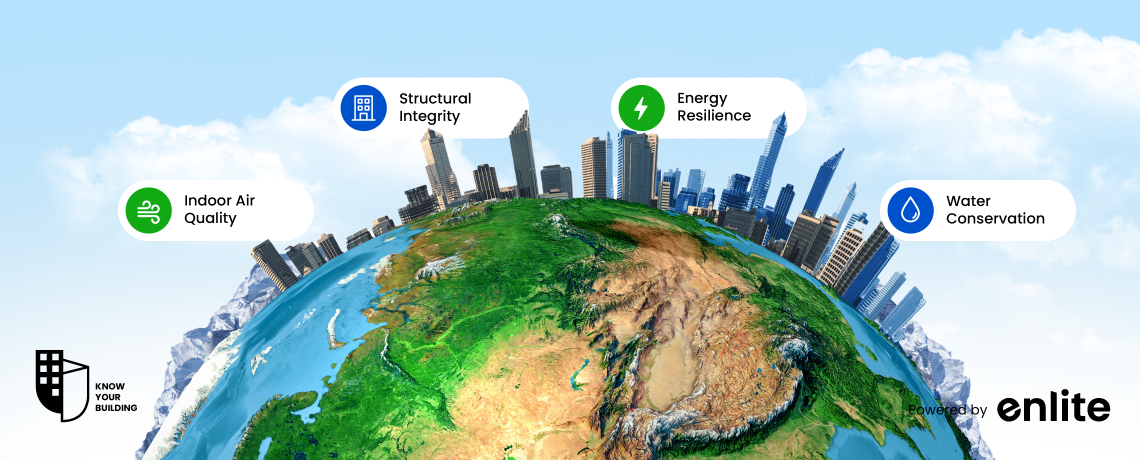Climate change poses significant challenges to the built environment, requiring commercial real estate to adapt and become more resilient. This article explores the concept of climate resilience in commercial real estate, highlighting the importance of resilient building design and strategies to enhance resilience. Emphasizing the role of resilient buildings on World Environment Day, this discussion underscores the need for proactive adaptation to climate change.
Understanding Climate Resilience in Commercial Real Estate:
Climate resilience refers to the ability of buildings and infrastructure to withstand, adapt to, and recover from adverse climate events, such as extreme weather, rising sea levels, and temperature fluctuations. For commercial real estate, resilience is essential to protect assets, ensure business continuity, and safeguard occupants’ well-being.
Importance of Resilient Building Design:
Resilient building design integrates climate adaptation and mitigation strategies into the architectural and operational aspects of commercial properties. This approach minimizes vulnerability to climate impacts, enhances durability, and ensures the long-term sustainability of buildings.
Strategies for Enhancing Climate Resilience:
Energy Resilience:
- Implementing renewable energy systems, such as solar panels and wind turbines, and incorporating energy storage solutions can ensure continuous power supply during grid disruptions caused by extreme weather events.
Water Management:
- Designing buildings with advanced water management systems, including rainwater harvesting, greywater recycling, and efficient stormwater management, helps mitigate flooding risks and ensures water availability during droughts.
Structural Integrity:
- Utilizing durable materials and construction techniques that withstand extreme weather conditions, such as high winds, heavy rainfall, and seismic activity, enhances the structural integrity and longevity of buildings.
Indoor Environmental Quality:
- Ensuring high indoor environmental quality through effective ventilation, air filtration, and thermal comfort systems protects occupants from health risks associated with climate change, such as poor air quality and extreme temperatures.
Financial and Operational Benefits of Resilient Buildings:
Investing in resilient building design offers numerous financial and operational benefits, including reduced repair and maintenance costs, lower insurance premiums, and enhanced property value. Resilient buildings also attract environmentally conscious tenants and investors, contributing to higher occupancy rates and long-term financial stability.
Policy and Regulatory Support for Resilient Construction:
Government policies and regulations play a crucial role in promoting resilient construction practices. Building codes, zoning laws, and incentives for climate-resilient design encourage developers and property owners to adopt adaptive measures and contribute to broader climate adaptation efforts.
Case Studies: Examples of Climate-Resilient Commercial Buildings:
Highlighting real-world examples of climate-resilient commercial buildings can demonstrate the effectiveness of adaptive strategies. Case studies may include:
- The Edge (Amsterdam, Netherlands): Known as one of the greenest and smartest buildings in the world, The Edge incorporates advanced energy management systems, renewable energy sources, and sustainable materials.
- The Crystal (London, UK): A sustainable building that showcases innovative water management, energy efficiency, and resilient design features to adapt to climate change impacts.
- One Angel Square (Manchester, UK): A resilient commercial building with high energy efficiency, renewable energy integration, and robust structural design to withstand extreme weather.
Conclusion:
In conclusion, adapting commercial real estate to climate change challenges is imperative for ensuring the resilience of buildings and the planet. By integrating resilient design strategies, enhancing structural integrity, and leveraging renewable energy and advanced water management systems, the industry can protect assets, ensure occupant safety, and contribute to climate adaptation efforts. Celebrating World Environment Day, we must prioritize resilience in commercial real estate to build a sustainable and secure future.














